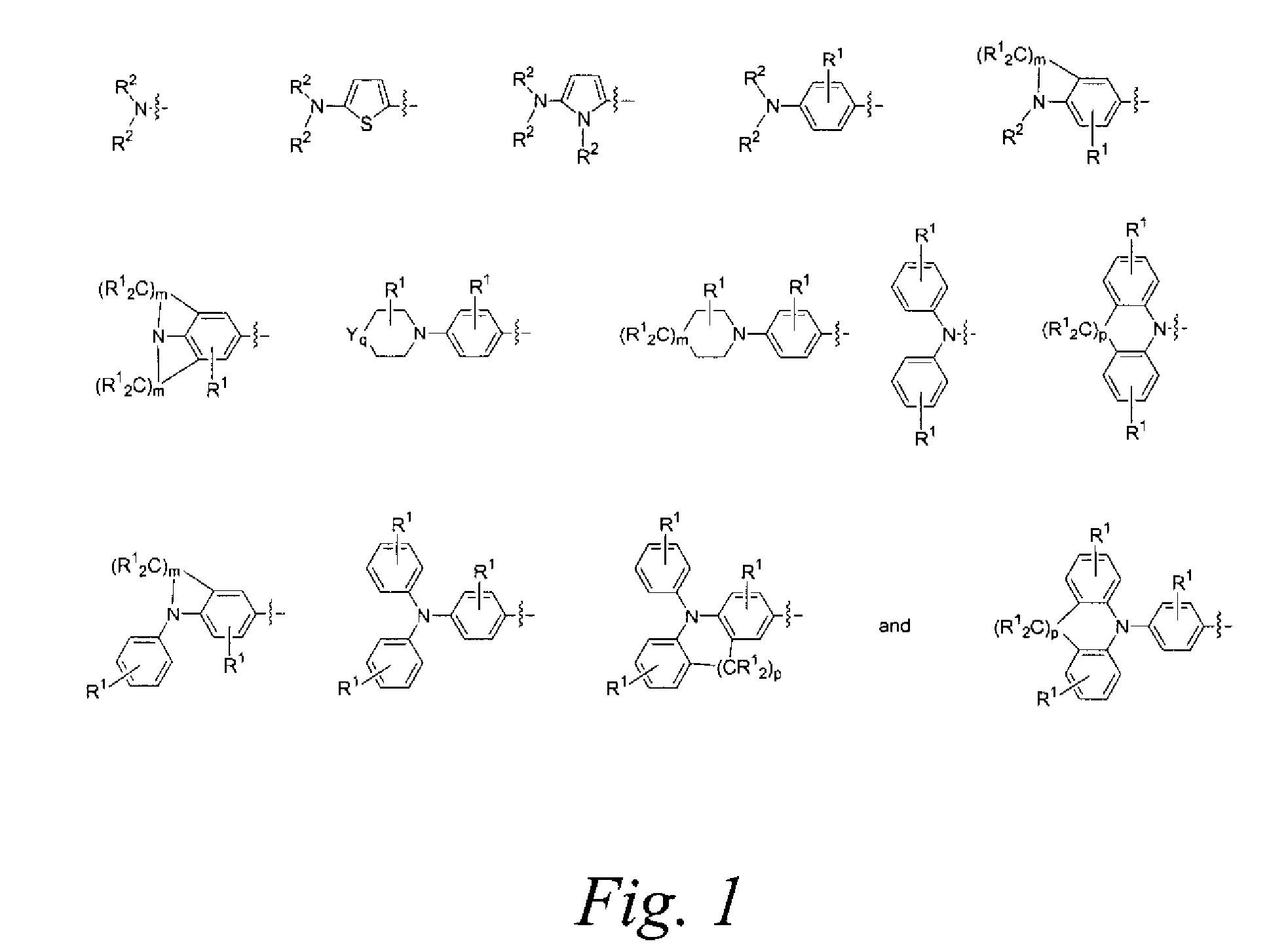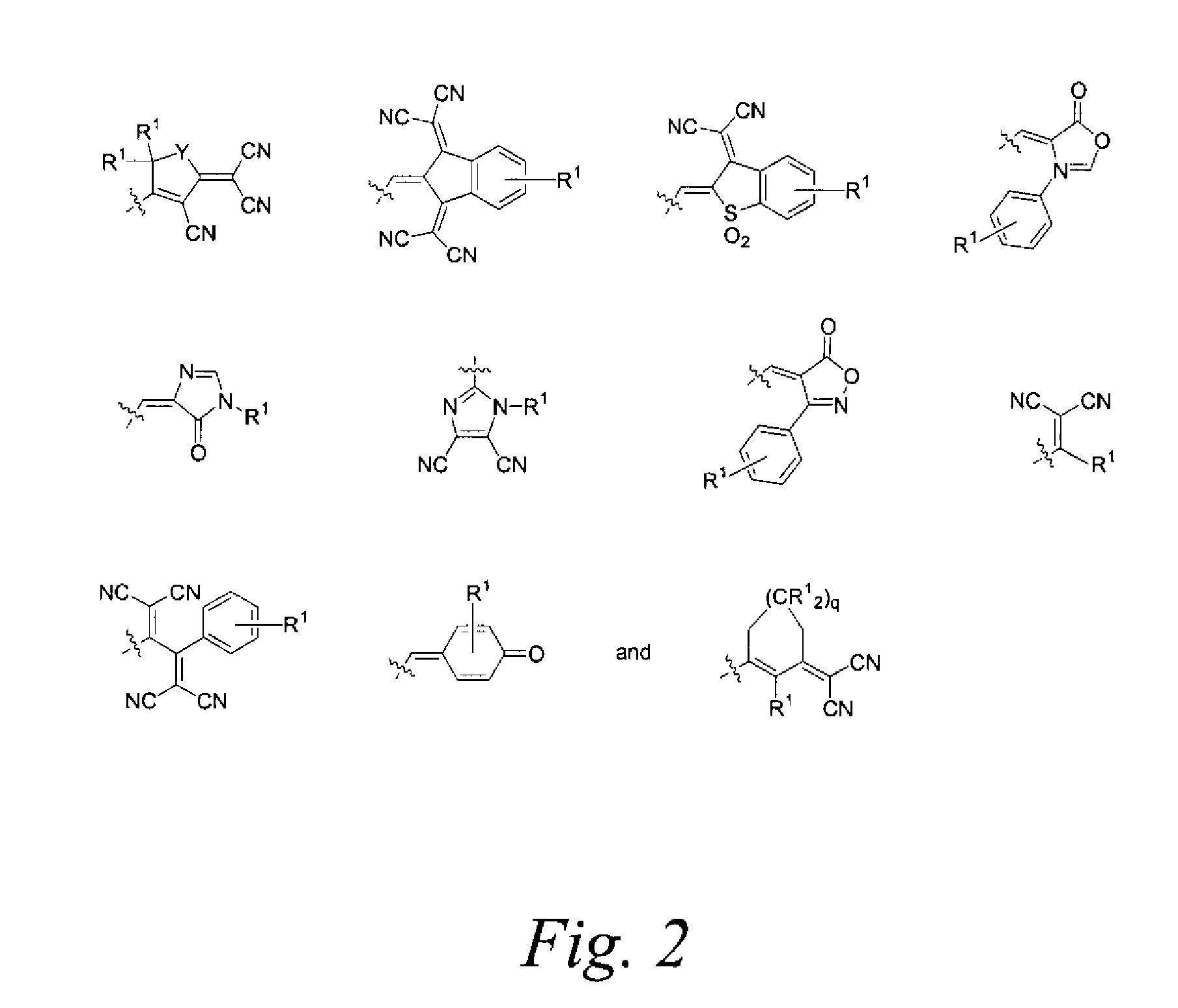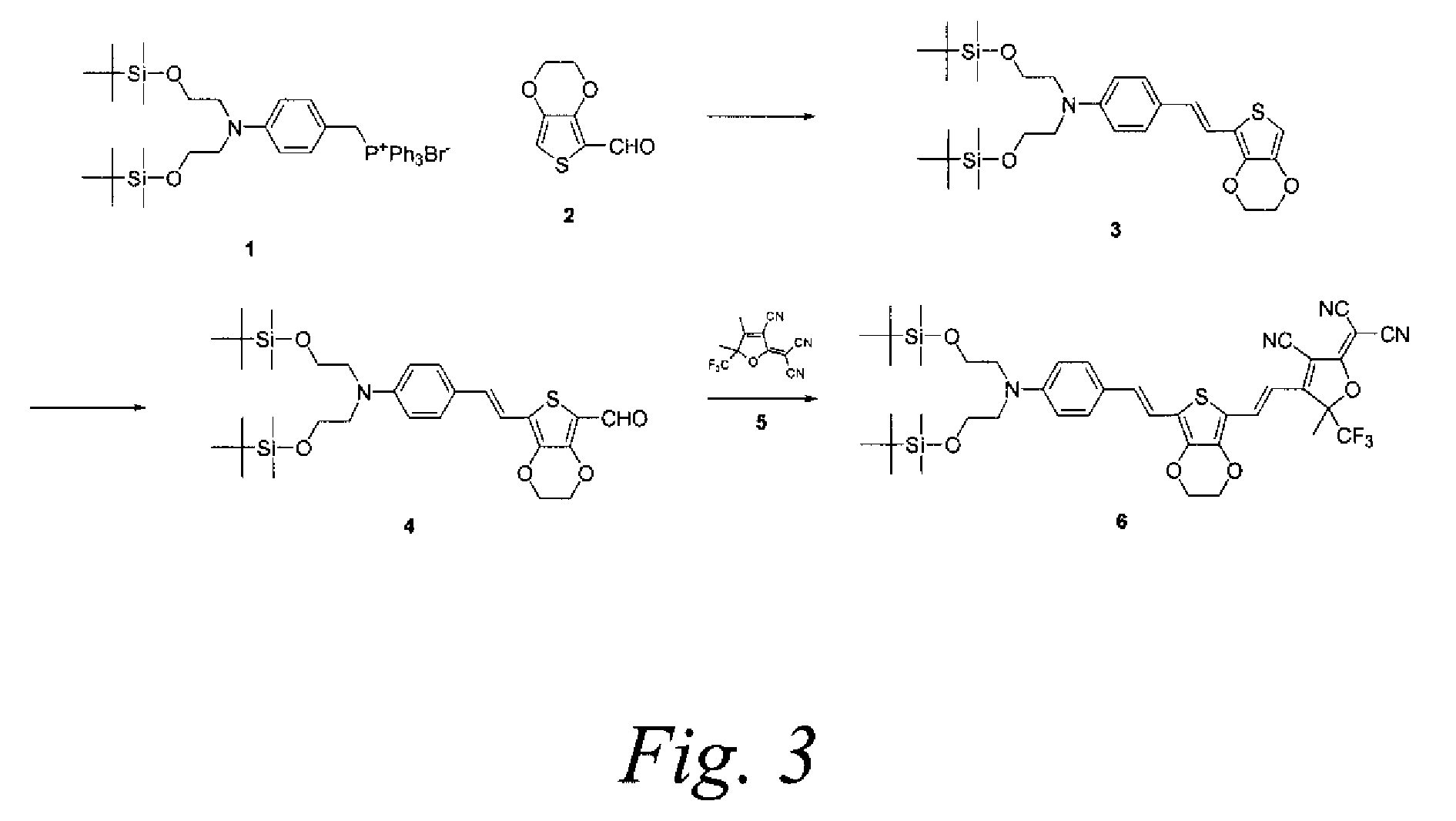Low Loss Electro-Optic Polymers Composites
a technology of electrooptic polymers and composites, applied in nanooptics, instruments, chemistry apparatuses and processes, etc., can solve the problems of increasing optical loss and increasing phase separation
- Summary
- Abstract
- Description
- Claims
- Application Information
AI Technical Summary
Problems solved by technology
Method used
Image
Examples
examples
[0013]The following example(s) is illustrative and does not limit the Claims.
[0014]The following steps are illustrated in FIG. 3.
[0015]Compound 3: Referring to FIG. 3, compound 1 (50 g, 0.065 mol) was dissolved in 700 mL THF. At −40° C., BuLi (2.5 M, 29 mL, 0.072 mol) was added dropwise. After addition, it was warmed to rt for 30 min. Compound 2 (11.1 g, 0.065 mol) was dissolved in 300 mL THF and added to the above solution. It was stirred at rt overnight. After removing the solvent, the reaction mixture was purified by column chromatography with CH2Cl2. The product, 30.6 g, was obtained in 81% yield.
[0016]Compound 4: Compound 3 (30.5 g, 0.053 mol) was dissolved in 200 mL THF. At −78° C., BuLi (2.5 M, 42 mL, 0.106 mol) was added dropwise. It was warmed to −20° C. and then cooled down again. At −78° C., DMF (16.4 mL, 0.212 mol) was added. It was stirred overnight. The reaction mixture was extracted with CH2Cl2, washed with water, and dried over MgSO4. After removal of the solvent, it...
PUM
| Property | Measurement | Unit |
|---|---|---|
| Nonlinear system | aaaaa | aaaaa |
Abstract
Description
Claims
Application Information
 Login to view more
Login to view more - R&D Engineer
- R&D Manager
- IP Professional
- Industry Leading Data Capabilities
- Powerful AI technology
- Patent DNA Extraction
Browse by: Latest US Patents, China's latest patents, Technical Efficacy Thesaurus, Application Domain, Technology Topic.
© 2024 PatSnap. All rights reserved.Legal|Privacy policy|Modern Slavery Act Transparency Statement|Sitemap



